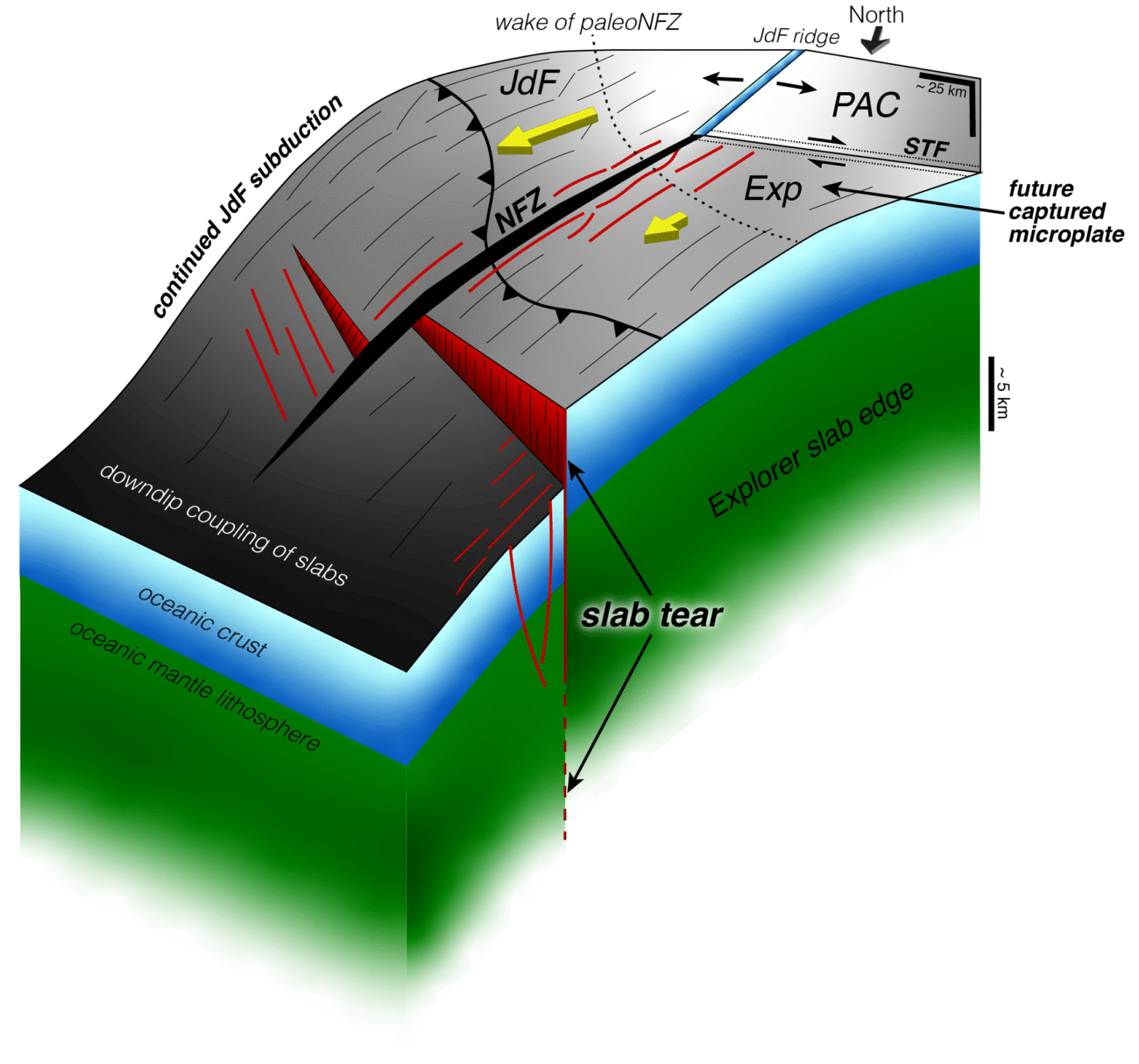
"With unprecedented clarity, scientists have directly observed a subduction zone-the collision point where one tectonic plate dives beneath another-actively breaking apart. The discovery, reported in Science Advances, sheds new light on how Earth's surface evolves and raises fresh questions about future earthquake risks in the Pacific Northwest. Subduction zones are the sites of Earth's most powerful tectonic events. They drive continents across the globe, unleash devastating earthquakes and volcanic eruptions, and recycle the planet's crust deep into the mantle."
""Getting a subduction zone started is like trying to push a train uphill-it takes a huge effort," said Brandon Shuck, an assistant professor at Louisiana State University and lead author of the study. "But once it's moving, it's like the train is racing downhill, impossible to stop. Ending it requires something dramatic-basically, a train wreck." Shuck conducted the research while he was a postdoctoral research fellow at the Lamont-Doherty Earth Observatory, which is part of the Columbia Climate School."
"Off the coast of Vancouver Island, in a region of Cascadia where the Juan de Fuca and Explorer plates slowly move beneath the North American plate, scientists have found the answer. Using a combination of seismic reflection imaging-essentially an ultrasound of the Earth's subsurface-and detailed earthquake records, the team has captured a subduction zone in the process of tearing itself apart."
A subduction zone off Vancouver Island in Cascadia is actively breaking apart where the Juan de Fuca and Explorer plates subduct beneath the North American plate. High-resolution seismic reflection imaging combined with detailed earthquake records captured the process of internal tearing. The observation indicates that subduction zones can end through dramatic internal breakup that halts continued plate-driven motion. This process influences continental evolution, crustal recycling, volcanism, and the potential for large earthquakes. The finding prompts reevaluation of seismic hazard in the Pacific Northwest and refines understanding of how plate tectonic systems start and stop over geologic time.
Read at State of the Planet
Unable to calculate read time
Collection
[
|
...
]